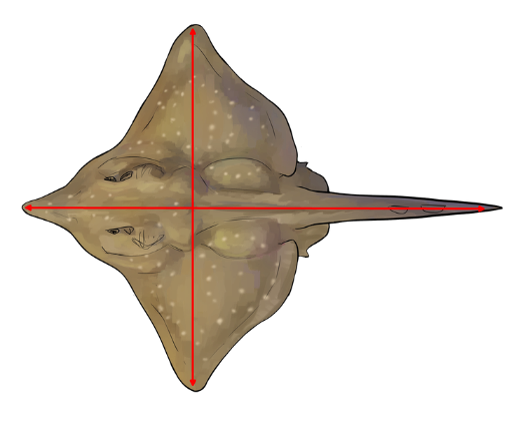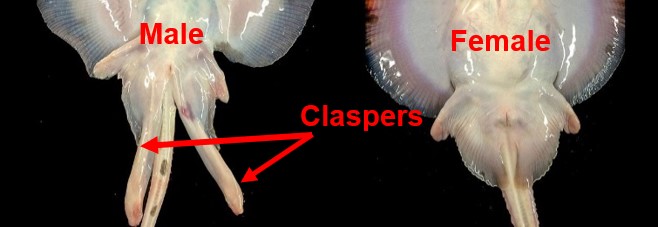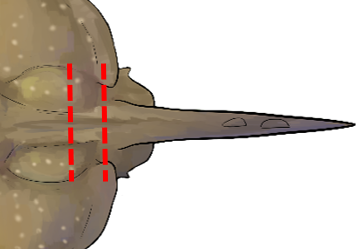Strandings - how you can help
When you find a dead stranding, as well as a photograph, it would be really useful if you could collect some further information and samples for DNA and age/growth studies we support. If you are willing to do this, it will involve you returning to the dead skate (if it is still there) and removing some tissue and a vertebrae for us (they have annual growth rings rather like a tree).
You will need a tape measure, a sharp knife, a pair of gloves (washing up gloves will be fine), some sandwich bags and space in your freezer to store the samples.
Please be very careful when cutting the skate and wash your hands well afterwards.
Please follow the instructions below:
1. Measure
Please measure its total length, snout tip to tail tip and disc width.
If possible please take a picture of the top side of the skate, showing as much of the body as possible

2. Check if it is a male or female.

Look underneath the skate where the tail joins the body, males have 2 claspers, but these might be quite small, females don’t. If possible, take a photo.
3. Take some samples
DNA – if the skate is not too degraded
Remove the skin from an area of the skate that has not deteriorated and remove a small (1cm x 1cm x 1cm)
amount of muscle, place it in a plastic bag (ideally in 2 bags), put it in the freezer and
contact Cath Jones on c.s.jones@abdn.ac.uk.

Use a sharp knife to cut a section of the spine out near the top of the tail. This needs to be about 8cm in length between cuts. The vertebrate have natural gaps between them and will be easier to cut at these gaps, use the knife point to find them. Place the sample in a plastic bag (ideally 2 or 3 bags to prevent leakage and smells!) and freeze. Contact James Thorburn on jat21@st-andrews.ac.uk




